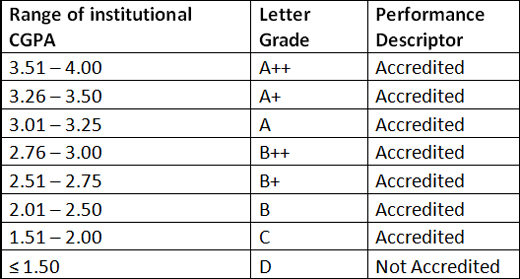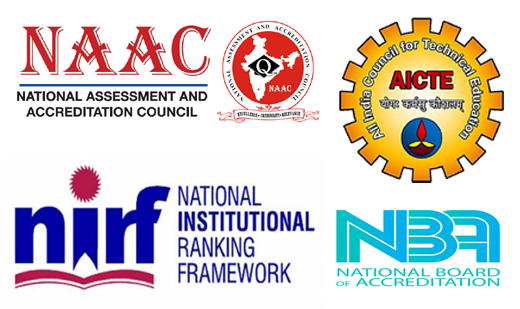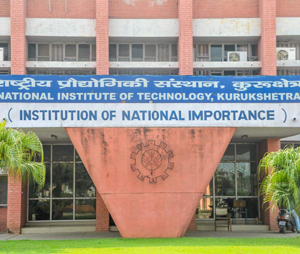Institution of Eminence and Institution of National Importance; Are such tags necessary?
Institution of Eminence and Institution of National Importance; Are such tags necessary?
Mangalore Today News Network
By Dr G Shreekumar Menon
Mangaluru, May 4, 2020: There are over 800 Universities in India which are broadly classified as: Central, State, Deemed, Private Other autonomous
To assess and accredit the above categories of institutions there is a National Assessment and Accreditation Council (NAAC) which is an organisation that assesses and accredits higher education Institutions (HEIs) in India. It is an autonomous body funded by University Grants Commission.
NAAC was established in 1994 in response to recommendations of National Policy in Education (1986). This policy was to "address the issues of deterioration in quality of education", and the Programme of Action (POA-1992) laid out strategic plans for the policies including the establishment of an independent national accreditation body.
Grading
The NAAC grades institutes on an eight-grade ladder:

In simple terms, NAAC accreditation or grade of a higher learning institute is supposed to help the student to figure out all the details about the institute such as quality of education, research output, teaching-learning, infrastructure etc. NAAC grade helps students to choose the best institute based on its NAAC grade/ performance in the NAAC accreditation process. NAAC grade also determines the value of degree offered by the higher learning institutes.
The All India Council of Technical Education (AICTE) is an Approval body, while NAAC is an Accreditation body.The All India Council for Technical Education is the statutory body and a national-level council for technical education, under Department of Higher Education, Ministry of Human Resource Development. The AICTE is a statutory authority that looks into the planning, formulation and maintenance of standards, funding, maintaining parity of certification and awarding the technical education in the country.

The National Board of Accreditation (NBA) is one of the two major bodies responsible for accreditation of higher education institutions in India, along with the National Assessment and Accreditation Council (NAAC).The NBA accredits programmes and not institutes. These include diplomas, undergraduate and postgraduate programs. Accredited fields include engineering & technology, management, pharmacy, architecture, applied arts and crafts, computer applications and hospitality and tourism management.
This apart, there is National Institutional Ranking Framework (NIRF) which is a methodology adopted by the Ministry of Human Resource Development (MHRD), Government of India, to rank institutions of higher education in India. The Framework was approved by the MHRD and launched on 29 September 2015. There are separate rankings for different types of institutions depending on their areas of operation like universities and colleges, engineering institutions, management institutions, pharmacy institutions and architecture institutions. The Framework uses several parameters for ranking purposes like resources, research, and stakeholder perception. These parameters have been grouped into five clusters and these clusters were assigned certain weightages. The weightages depend on the type of institution.
Institutions of Eminence scheme was launched in order to implement the commitment of the Government to empower the Higher Educational Institutions and to help them become world class teaching and research institutions, as announced by the Hon’ble Finance Minister in his budget speech of 2016. This was to make available affordable access to high quality education for ordinary Indians.
The need for creating a separate category of universities which will be regulated differently from other universities came about because of the fact that none of the Indian universities are placed in World University Rankings.
Attributes of IOEs that will separate them from other universities:
• The institutes will be free from most UGC regulations which are binding on other universities, except for some flexible guidelines
• They will not have to adhere to UGC mandated curriculum and would be free to fix their own curriculum and syllabus
• They would be able to admit 30 per cent of foreign students on merit and deciding the fee charged from foreign students will also be their prerogative
• They can recruit foreign faculty upto 25 per cent of its faculty strength
• They will have the flexibility of course structure in terms of number of credit hours and years to take a degree, after approval of their Governing Council and broadly conforming to the minimum prevailing standards
• They shall be free to enter into academic collaborations with other institutions of India
However, all these facilities will be subject to the University of Eminence meeting the goal of becoming an institution of global repute at the end of the fifth and subsequent years failing which they could be penalized by the Empowered Expert Committee to the extent of revoking their eminence tag and reverting them back to their original status. Institute of National Importance (INI) is a status that may be conferred on a premier public higher education institution in India by an act of Parliament of India, an institution which "serves as a pivotal player in developing highly skilled personnel within the specified region of the country/state".
Institute of National Importance (INI) is a status that may be conferred on a premier public higher education institution in India by an act of Parliament of India, an institution which "serves as a pivotal player in developing highly skilled personnel within the specified region of the country/state".
If the above is not confusing enough, there are a whole lot of other organizations like newspaper and magazine publications, international organizations who have their own system of rankings based on other extraneous considerations.
The above in brief is the complex scenario of assessment and accreditation process in vogue in our country. It is so complicated and vague for any student or parent to make much sense out of it. Not surprisingly parents and students remain focussed only on the fee structure rather than any other attribute advertised. Further in this system of evaluation institutions may have identical Grade Point Average scores but the facilities and quality of education will vary vastly. To illustrate a few examples of how assessments can be misled by institutions, the creation of Centres of specialized learning on a variety of fields, can be studied.
Paper Centres
It is the current trend in many educational institutions and universities to set up dedicated Centres often as part of a strategy to improve not just research but also teaching and innovation, and thereby improved ranking and scores. However as often everything that happens in this country gets reduced to a big farce. There are many universities that have created more than a hundred Centres in various disciplines. The modus operandi is simple; every Department is encouraged to set up as many Centres as possible. Name board of the Centre is prepared and placed in front of the chamber of the Head of Department (HOD) or that of the Associate Professor, who is also given additional charge of the Centre. No extra remuneration is paid for this task, no additional staff appointed, no infrastructure or facilities, and zero funding by the university. In such a set-up there is hardly any scope for doing research or publishing research work. However,on paper there is a full-fledged Centre functioning complete with staff and head, just to mislead assessment and accreditation agencies. Photographs of events are often manipulated. As most of the assessment and accreditation process are online, it is easy to mislead. If the assessment agencies seek data about the infrastructure facilities available, staff deployment and their remuneration, university funding and performance details, the cat will be out of the bag.
Paper MOU-s
Much importance is being given by assessment and accreditation agencies for universities entering into Memorandum of Understanding with Universities abroad on various aspects of teaching, research, faculty and student exchange. This is another area which is much misused by Indian universities. Many universities in India have inked MOUs with innumerable universities abroad. On paper everything looks rosy but if the outcomes are scrutinized the results will be very disappointing. It is common knowledge that many foreign universities especially in Western countries are desperate for students; these universities view MOU’s as only a route to lure students. However the exorbitant fee structure and high cost of travel and living in Western countries does not make student exchange programs viable. Similar is the case with faculty exchange programs. Hence these all end up as mere paper MOU’s.
Another area of concern is the quality and stature of the universities abroad with whom MOUs are being entered into. Hardly any MOUs are being entered into with Ivy League Universities or other internationally renowned universities. Majority of the MOUs are with lesser known American, European and Australian universities. To cut a long story short MOU’s have just an advertisement value only, for inclusion in university brochure and in print and visual media.The Government should exercise a strong vigil and impose checks on the quality and quantity of MOU’s being entered into. Preferably MOU’s with Ivy League Universities and those figuring in the top 300 world universities only should be encouraged. There should be an annual review of the outcomes of MOU’s and how it has benefited the students, if there is nothing on record such MOU’s should be compulsorily terminated.
To obviate the trend of mushrooming of Centres of various kinds, again, purely for advertisement value, the Government should conduct surprise audit to check whether they are paper centres or not? It will not be surprising if most of the centres turn out to be dummy set ups. Inspection teams for all of the above kinds of assessments are exclusively teaching staff drawn from different institutions. They turn a Nelson’s eye at such malpractices on the plea that it is happening in every institution. A correct solution would be to hire retired civil servants, retired members from Judiciary including lower judiciary, professional doctors, engineers, architects, software professionals and representatives from trade and industry as part of the assessment team. The present system of academic staff only in the assessment team from different institutions creates an unwritten agreement of conniving and ignoring shortcomings and deficiencies. If our universities and Higher Educational Institutions want to be high on global rankings, assessments should be rigorous and systematic.
By distributing tags like ‘Institution of Eminence’ and ‘Institution of National Importance’ the universities cannot improve their rankings. Despite having over 800 universities in India, not one of them has been able to gain entry even into the Top 500 Universities in the World. This is because our universities are constantly engaged in window dressing, advertising non-existent centres and busy inking unproductive MOU’s with low ranking foreign universities. One Institution of Eminence had its laboratory removed from the ICMR list of designated laboratories for undesirable practices. In another instance Government land was secretly encroached upon by a university again holding an Institution of Eminence tag,to build a hospital which was later demolished by the civic authorities and heavy penalty imposed. What impact such unethical practices can create on young minds?
Another important factor very scrupulously avoided by assessment and accreditation agencies is alcohol and drug abuse by students. Many of our educational hubs and universities that have managed to get Institution of Eminence tag are notorious for being major alcohol and drug addiction centres. On paper there is a strict policy laid down but in practice all institutions steer away from any meddling in this sensitive area. It is also not uncommon to read in newspapers about faculty members supplying such banned and prohibited items to students in exchange for money or other favours. Since this is an all India problem, the Ministry of Human Resource Development should formulate a uniform policy of prohibition and punishment for implementation across all institutions of learning. Assessment agencies should strictly scrutinise the practical enforcement by institutions and also interact with the local Police and other enforcement agencies to determine compliance by the institution.
Further many universities are embroiled in litigation over fees and other issuewith students and staff, this need to be incorporated into their websites and listed under ‘Pending Litigation’, for the sake of transparency. All litigations in which the Institution is involved should be listed for knowledge of the public.
Is it any wonder that for any kind of higher education young students go to places like even Malta and New Zealand in preference to India, only because in those countries unethical practices are discouraged? Students are not bothered about rankings and tags, ethics and credibility are more important.
As a remedial measure the government should revamp the grading of universities and bring in place a single system of star rating prevalent in the hotel industry. What facilities are compulsorily needed for a 7 star, 5 star and 3 star hotel are laid out in black and white in the public domain. A 3 star hotel can thus never pass off as a 5 star hotel. Such a system needs to be put in place to enlighten the public about the facilities and infrastructure available in a university. This will also give clarity to university officials about the infrastructure and facilities that they need to build up in order to climb up the ranking ladder.
Finally, it is most unfortunate that despite UGC instructions the post of Chancellor of a university is not filled by an academician but by some community leader or Trust official or family member which is sponsoring the university. Though the UGC does not approve of any post likePro- Chancellor, many Deemed to be Universities have created such a post and the incumbent selected from the family or Trust that is managing the university.Despite such flagrant violation the Government keeps conferring tags like ‘Institution of Eminence’ on such universities or grade them A++. Many such errant institutions can be disciplined by simply stipulating that only a distinguished academician can be the Chancellor, and by abolishing the post of Pro-Chancellor, if not, such universities should be made ineligible to participate in assessment and accreditation proceedings.An academician at the helm of affairs can steer a university to respectable ranking and grading, in the hands of others it will be forever contriving creating dummy centres and paper MOUs.
Unless we revamp the assessment and accreditation process, none of the Indian universities will be able to enter the world top rankings and we will not be able to stem the flow of students wanting to study abroad. Also precious bank loans are being given to bolster education in unheard of institutions in countries like Malta and New Zealand, which will predictably end as non-performing assets.
If we need to have a few Ivy League like institutions then our assessment and accreditation methodology needs a thorough overhaul, otherwise it will be a sorry spectacle of the nation being dotted with innumerable Institutions of Eminence and Institutions of National Importance, but none figuring even in the Top 500 institutions of the world.
 Dr. G. Shreekumar Menon, IRS (Rtd) Ph. D (Narcotics),Former Director General, National Academy of Customs Indirect Taxes and Narcotics & Multi-Disciplinary School Of Economic Intelligence India; Fellow, James Martin Centre For Non Proliferation Studies, USA; Fellow, Centre for International Trade & Security, University of Georgia, USA; Public Administration, Maxwell School of Public Administration, Syracuse University, U.S.A.;AOTS Scholar, Japan;Former Registrar YENEPOYA (Deemed to be University) Mangalore Karnataka State;Former Head, Centre for Narcotics & Psychotropic Substances (CNPS), Manipal Academy of Higher Education,(MAHE) Manipal, Karnataka State, India. He can be reached at- www.shreekumarmenon.com
Dr. G. Shreekumar Menon, IRS (Rtd) Ph. D (Narcotics),Former Director General, National Academy of Customs Indirect Taxes and Narcotics & Multi-Disciplinary School Of Economic Intelligence India; Fellow, James Martin Centre For Non Proliferation Studies, USA; Fellow, Centre for International Trade & Security, University of Georgia, USA; Public Administration, Maxwell School of Public Administration, Syracuse University, U.S.A.;AOTS Scholar, Japan;Former Registrar YENEPOYA (Deemed to be University) Mangalore Karnataka State;Former Head, Centre for Narcotics & Psychotropic Substances (CNPS), Manipal Academy of Higher Education,(MAHE) Manipal, Karnataka State, India. He can be reached at- www.shreekumarmenon.com
- New Synthetic Drugs Trapping Youth
- Mood Modifying Chips - Future of Drug Use
- Ramping up Indo-Bangla border security
- IITM- A premier educational Institution in a forest. What can we learn?
- Former PM, Manmohan Singh: Notable laws passed under his tenure
- Hashish on Ratnagiri Seashore
- The Poor cry out to Us: Do we respond?
- Clandestine Meth Labs Sprouting Across India
- Hydro ganja from Bangkok latest craze among youth in India
- "Memories to Treasure" Dr.Michael Lobo’s new book
- Dominance of Private Universities: Will it make education inaccessible to underprivileged students?
- Monti Phest: A rich heritage of South Canara
- When jails become drug dens
- Kashmir Bhavan in Bengaluru: A must visit place
- "MAI and I" Book of Angelic Emotions
- Draupadi Murmu - The New ’President of India’
- Anthony Ashram in the city grows a classic museum
- First College of Fisheries in India - A Golden Jubilarian
- Flushing Meadows - A Vintage Mansion
- The Colonel�s Bequest
- A Mangalorean PM and his RBI Governor Brother: The Extraordinary story of the Benegal Brothers
- There is no higher religion than Truth: Theosophical Society
- L�affaire - Ashu & Yiju of Mangalore
- Mangalore in Kowloon
- 1568 to 2018 AD: 450 years of Christianity in Mangaluru
- Vice President elect Naidu moves on from nadir to zenith, the phenomenal journey
- Embracing the Outdoors: How Heated Jackets Are Revolutionizing Cold Weather Activities
- Efficient and Sustainable Packaging Solutions with FIBCs
- The Hybrid Kilt Revolution | Where Tradition Gets Trendy
- Affordable Elegance | Embrace Style on a Budget with Cheap Kilts
- Unleashing Style and Functionality | Exploring Tactical Kilts
- Mangalore’s Heroic Lady marks 105th Birthday
- Santa the Christmas spirit
- Geriatric care: Mangalore strikes a fine balance
- The Don Who Made Two Empires to Clash
- CHITRAPUR SARASWATS - A Great Kanara Community
- Our new President Ram Nath Kovind’s significant journey to Rashtrapathi Bhavan
- Marriages made in heaven, big fat weddings made in India
- Eid insight - The giver of glad tidings
| Comments on this Article | |
| Sreevalsan VK, Kozhikode | Fri, May-8-2020, 9:29 |
| Thought provoking article. Hearty congratulations. | |
| Sundereshan, Chennai | Wed, May-6-2020, 12:52 |
| Excellent Article You have taken much pain to expose the functioning of the NAAC under the supervision of the UGC. This article should be brought to the notice of the Honorable minister for Human Resources and development Government of India. The accreditation methodology needs a thorough overhaul otherwise as observed by you none of the universities in our country will find a place in the top 500 universities of the world, if not the whole of India. we are seeing the ugly faces of the private/ deemed universities in Tamilnad | |
| A T PANNEERSELVAM, THANJAVUR | Mon, May-4-2020, 12:07 |
| A THOROUGHLY ANALYSIS OF OUR UNIVERSITIES.A BOLD REVIEW. IT SHOULD REACH THE PEOPLE AT THE HELM OF AFFAIRS. | |
| AVINASH SHARMA, NEW DELHI | Mon, May-4-2020, 11:54 |
| Excellent Article by Dr. G. Shreekumar Menon. He is a very excellent Former DG OF NACIN NOW NOW VICE CHANCELLOR OF THE UNIVERISTY. HE very immonent speaker I personally suggest to follow his guidelines. So I am fully agreed with his suggestion on above mentioned article. | |
- CITY INFORMATION
- TRAVEL
- TOURIST INFORMATION
- HEALTH CARE
- MISCELLANEOUS




 Write Comment
Write Comment E-Mail To a Friend
E-Mail To a Friend Facebook
Facebook Twitter
Twitter  Print
Print 


